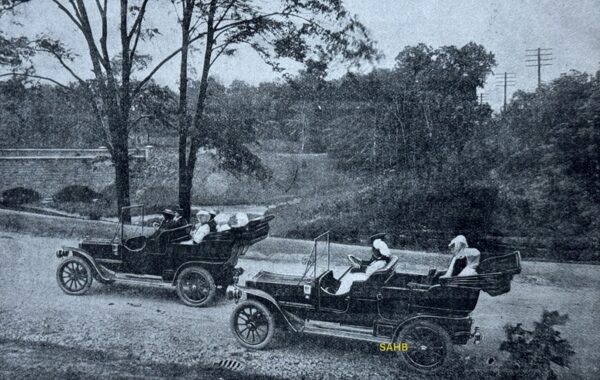
The British journalist writing in Motor made much of the advantages in terms of smoothness of power delivery of the six-cylinder engine of this American motor car. Although this was a new venture by Winton into six-cylinder cars, the journalist reminded readers that Winton had used eight cylinders in its 1903 racing car. Strangely, however, the report did not mention another remarkable feature of the car: a compressed-air starter that enabled Winton, in American advertising, to call its car “The Self-Starting Winton Six-Teen-Six”. That method of starting also enabled Winton, from 1911, to offer tyre inflation using the same compressed-air reservoir.
The Winton Motor Carriage Company was founded in March 1897 when the Scottish immigrant Alexander Winton turned from bicycle manufacture to motor car production. He had already made two prototype cars in 1896 – thus making Winton one of the first American companies to sell a motor car. Winton’s car engendered much scepticism, so he undertook an 800-mile endurance run from his factory in Cleveland, Ohio to New York City.
His first sale was to Robert Allison of Port Carbon, Pennsylvania, after Allison saw an advertisement in an 1898 issue of Scientific American. In 1899, Winton sold 21 more cars, one of them to James Ward Packard. Unfortunately, Packard was dissatisfied with his car and Winton challenged him to do better. The rest is history – a history later repeated with Enzo Ferrari and Ferruccio Lamborghini.
Despite very conservative policies on technical development and styling (although six cylinders and self-starting would seem to belie this impression), Winton sold cars successfully to upmarket customers through the 1910s, but sales fell during the 1920s. Winton ceased production of motor cars in February 1924.
In 1912, Winton started producing diesel engines for stationary and marine use, and petrol engines for heavy vehicles, independent of its motor car production. The Winton Engine Company remained successful while the car company declined, and became a major supplier of engines for diesel-electric and petrol-electric railcars in the 1920s. The engine company was sold to General Motors in 1930.
Image courtesy of The Richard Roberts Archive: www.richardrobertsarchive.org.uk







Leave a Comment